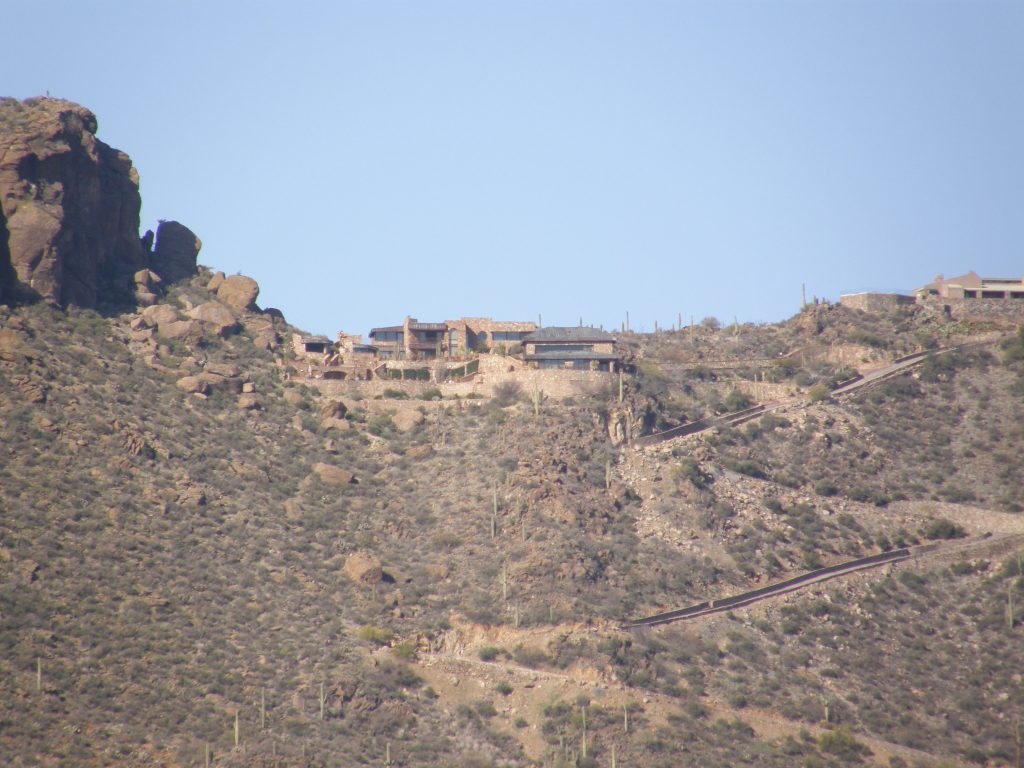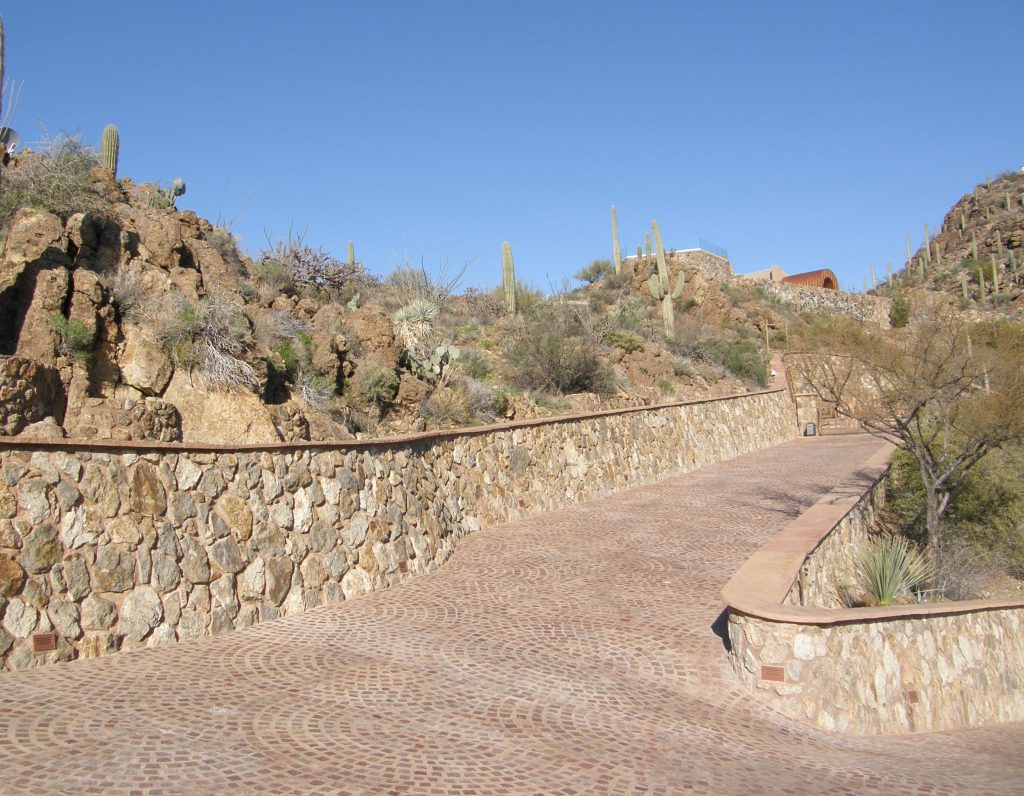Throughout history, starting more than 2,100 years ago, Porphyry paving stones have been used to stabilize roads.
Different patterns were designed for roads to meet the challenges of the varied terrains. Once in place they needed to hold up to years of heavy use with a minimum of maintenance. Arc patterns, also know as fans, were used to hold together on steep hills with the top of the arc on the upside of the slope, similar to the structures used on aqueducts and bridges. With the pressure of the hill and travelers causing the weight of pressure down on the arc the structure constantly locks in the stone instead of pushing them apart.

In this unique and remote Arizona property, porphyry was the evident choice for its structure and beauty. The steep incline of the road accessing the mountain side as well as an abrupt incline in the driveway, perfectly showcases a double fan pattern featuring several large circles. When set properly, arcs provide structural integrity in steep inclines.

The driveway has a steep uphill entrance transitioning to a flat large area in front of the house and a separate steep downhill exit. The challenge was to design the layout so that the proper use of the arcs as structural elements, with the top of the fans on the upside of the hill, could be applied. The transitioning locations where one slope met another and the arc pattern needed to change was resolved by joining the top of two fans in the middle forming a circle allowing the pattern to change direction as required.

The planning paid off with the end result a stunning, structural and classic looking masterpiece.



